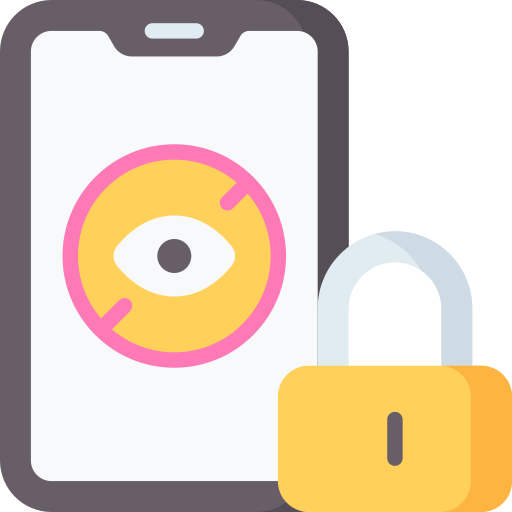The Impact of Excessive Device Use on Physical and Mental Health
Excessive device use has become a widespread phenomenon in today’s society, with individuals of all ages spending hours accessing screens throughout the day. This has raised concerns about the potential impact on both physical and mental health. From a physical standpoint, excessive device use can lead to numerous issues such as digital eye strain, neck and back pain, and even more serious conditions like repetitive strain injuries. The sedentary nature of prolonged screen time also contributes to a more sedentary lifestyle, increasing the risk of weight gain, obesity, and related health complications.
In addition to the physical effects, excessive device use can also significantly impact mental health. Spending excessive time on screens has been linked to feelings of isolation, anxiety, and depression. The constant exposure to filtered and curated versions of other people’s lives on social media platforms can exacerbate feelings of inadequacy and self-comparison. Furthermore, the constant bombardment of information and notifications from devices can lead to a state of mental overload and decreased ability to focus or concentrate on other tasks. As a result, the overall well-being of individuals can be significantly compromised due to the negative effects of excessive device use.
Setting Boundaries: Establishing Screen Time Rules for Yourself and Your Family
In today’s digital age, it has become increasingly important to establish screen time rules for yourself and your family. With the constant accessibility of devices and the lure of social media, it is easy for individuals of all ages to get lost in a virtual world. However, excessive device use can have detrimental effects on both physical and mental health.
For starters, limiting screen time can help reduce the negative impact on physical health. Prolonged hours spent staring at screens lead to poor posture, strained eyes, and even increased sedentary behavior. By setting boundaries and encouraging breaks from devices, individuals can incorporate more physical activity into their daily routines and mitigate potential health risks.
Moreover, establishing screen time rules also promotes better mental health. Excessive device use has been linked to feelings of anxiety, depression, and a decreased ability to focus. By setting limits and allocating dedicated time for screen-free activities, individuals can prioritize their mental well-being, engage in meaningful interactions, and foster creativity.
In conclusion, implementing screen time rules for yourself and your family is crucial in maintaining a healthy and balanced lifestyle. By setting boundaries and encouraging alternative activities, individuals can prioritize physical and mental health, build stronger relationships, and ultimately find a healthy balance between the virtual world and the real-life experiences that matter most.
Creating a Balanced Daily Routine: Alternatives to Excessive Screen Time
As technology continues to advance, it is becoming increasingly important to strike a balance between screen time and other activities in our daily routines. Spending excessive amounts of time on devices can have detrimental effects on both our physical and mental health. To create a more balanced daily routine, it is crucial to incorporate alternatives to excessive screen time.
One alternative to consider is engaging in physical activities. Whether it’s going for a brisk walk, practicing yoga, or playing a sport, physical exercise can provide numerous benefits. Not only does it help improve physical fitness, but it also releases endorphins that boost mood and reduce stress. By incorporating regular physical activity into our daily routines, we can reduce dependency on screens and prioritize our overall well-being.
Another alternative to excessive screen time is dedicating time to hobbies or creative pursuits. Engaging in activities such as painting, writing, playing a musical instrument, or gardening can not only provide a break from screens but also stimulate our minds and inspire creativity. These pursuits can be fulfilling and offer a sense of accomplishment, all while allowing us to unplug and enjoy some screen-free time. By consciously choosing to spend our time on these meaningful activities, we can create a more balanced daily routine that is not solely centered around screens.
Managing Screen Time for Children: Effective Strategies for Parents
As technology becomes increasingly integrated into our lives, managing screen time for children has become a growing concern for parents. With the rise of smartphones, tablets, and gaming consoles, it can be challenging to strike a balance between allowing children to benefit from technology while also ensuring that they engage in other activities and maintain their physical and mental health.
One effective strategy for managing screen time is setting clear and consistent rules. Establishing consistent guidelines helps children understand the boundaries and expectations surrounding their device use. For example, you may decide to limit screen time to a certain number of hours per day or restrict device use to specific times, such as after completing homework or chores. By setting these boundaries, parents can encourage children to engage in other activities, such as reading, outdoor play, or spending time with family and friends. Additionally, discussing the reasons behind these rules, such as the importance of maintaining a healthy lifestyle or fostering social connections, can help children understand and appreciate the value of balancing screen time with other activities.
The Role of Parental Controls and Monitoring Apps in Limiting Screen Time
The use of parental controls and monitoring apps has become an increasingly popular strategy for limiting screen time among children. These tools provide parents with the ability to set restrictions on the type of content their child can access, as well as the amount of time they can spend on devices. By utilizing these controls, parents can ensure that their children are not exposed to inappropriate content and are able to maintain a healthy balance between screen time and other activities.
One of the key benefits of parental controls and monitoring apps is the ability to set time limits on device usage. This feature allows parents to establish consistent routines and ensure that their children are not spending excessive amounts of time glued to screens. By setting specific time restrictions, parents can encourage their children to engage in other activities such as outdoor play, reading, or hobbies. Additionally, these controls can help parents enforce bedtime routines, as they can automatically block access to devices after a certain time. This can be particularly beneficial in promoting quality sleep, as screen use before bed has been found to negatively impact sleep patterns.
Productivity Hacks: Maximizing Efficiency While Minimizing Screen Time
Getting work done efficiently is a goal that many individuals strive to achieve. However, in today’s digital age, it can be challenging to stay productive while minimizing screen time. Fortunately, there are several productivity hacks that can help you maximize efficiency without relying solely on screens.
One effective strategy is to utilize the power of planning and prioritization. By organizing and prioritizing tasks ahead of time, you can ensure that you stay focused and remain on track without constantly needing to refer to your screen. This can be done by using physical tools such as a planner or a to-do list, which can help you visualize your tasks and make it easier to stay on top of your responsibilities.
Another productivity hack involves incorporating regular breaks into your work routine. Studies have shown that taking short breaks throughout the day can actually improve productivity and enhance focus. Instead of spending these breaks scrolling through social media or watching videos, try engaging in activities that don’t require screens, such as going for a walk, reading a book, or practicing mindfulness. These activities can help refresh your mind, reduce screen time, and improve your overall productivity.
Breaking the Habit: Tips for Reducing Dependence on Screens
In today’s digital age, it is becoming increasingly challenging to break free from the grip of screens. Whether it is endlessly scrolling through social media feeds or binge-watching our favorite shows, our dependence on screens has reached alarming levels. However, it is not impossible to overcome this addiction and regain control over our lives. Here are a few tips to help you reduce your dependence on screens and find a healthier balance.
Firstly, start by setting realistic goals and gradually wean yourself off excessive screen time. Instead of going cold turkey, which can be overwhelming, try reducing your screen time in small increments each day. For example, you can set a goal to spend one hour less on your devices every day, and gradually increase that time as you become more comfortable. Additionally, identify the triggers that lead you to reach for your screens, whether it’s boredom, stress, or habit, and find alternative activities to occupy your time. This could be engaging in a hobby, spending time in nature, or connecting with loved ones. By replacing screen time with more fulfilling activities, you can break the habit and reduce your dependence on screens.
Nurturing Real-Life Connections: Building Relationships Offline
In today’s digital age, it is more important than ever to nurture real-life connections and build relationships offline. While technology has made it easier to connect with others online, we must not forget the value and significance of face-to-face interactions. Building relationships offline allows for deeper connections, a better understanding of non-verbal cues, and the opportunity to create lasting memories.
One way to foster real-life connections is by actively participating in social events and community activities. This could include joining a local club or organization, attending meetups or networking events, or volunteering for a cause you are passionate about. By immersing yourself in real-world interactions, you expose yourself to a diverse range of people and perspectives, which can lead to meaningful connections and friendships. Additionally, engaging in activities you enjoy alongside like-minded individuals can create common ground and facilitate the development of deep and fulfilling relationships.
Prioritizing Sleep: The Connection Between Screen Time and Quality Rest
Sleep plays a crucial role in our overall well-being, yet many of us find ourselves sacrificing quality rest due to excessive screen time. The connection between screen time and sleep has been well-documented, with studies indicating that the blue light emitted from electronic devices can disrupt our natural sleep patterns. The stimulation from screens can make it more difficult to fall asleep, resulting in shorter and less restorative sleep.
Moreover, the content we consume on screens, such as social media or intense video games, can also contribute to sleep problems. Engaging in stimulating activities before bed can heighten our alertness and make it harder to unwind, leading to sleep disturbances. It is important to recognize the impact that excessive screen time can have on our sleep and take steps to prioritize our rest. By creating a bedtime routine that limits screen exposure, such as turning off devices at least an hour before bed, we can give our minds a chance to wind down and prepare for a restful night’s sleep.
Finding a Healthy Balance: Incorporating Technology without Neglecting Other Aspects of Life
In today’s digital age, technology has become an integral part of our lives. From smartphones to laptops, we rely on these devices for communication, entertainment, and information. However, the increased usage of technology has also raised concerns about the potential negative impact on other aspects of life. It is crucial to find a healthy balance between incorporating technology into our daily routines and not neglecting other important areas of our lives.
One way to achieve this balance is by setting clear boundaries and limitations on our screen time. Establishing specific time blocks where we dedicate ourselves to activities that do not involve technology can help us reconnect with the world around us. This can include engaging in physical exercise, pursuing hobbies, spending quality time with loved ones, or simply taking a moment to relax and unwind. By consciously carving out time for these offline activities, we can maintain a healthy balance between our technological engagement and other aspects of life.
How does excessive device use affect physical health?
Excessive device use can lead to a sedentary lifestyle, which increases the risk of obesity, heart disease, and other health issues.
What are the potential effects of excessive device use on mental health?
Excessive device use can contribute to feelings of anxiety, depression, decreased self-esteem, and social isolation.
How can I set boundaries for myself and my family when it comes to screen time?
Establishing screen time rules, such as designated device-free hours or limits on daily usage, can help create a healthy balance and reduce excessive device use.
What are some alternatives to excessive screen time in a daily routine?
Engaging in physical activities, pursuing hobbies, spending time with loved ones, and reading books are all great alternatives to excessive screen time.
How can parents effectively manage screen time for their children?
Parents can set clear rules, encourage other activities, provide educational screen-time options, and use parental controls and monitoring apps to manage their children’s screen time effectively.
How can parental controls and monitoring apps help limit screen time?
Parental controls and monitoring apps allow parents to set time limits, block certain apps or websites, and monitor their children’s device usage, helping to limit excessive screen time.
Are there any productivity hacks to reduce screen time while maximizing efficiency?
Yes, techniques such as time-blocking, prioritizing tasks, using productivity apps, and minimizing distractions can help maximize efficiency and reduce screen time.
How can I break the habit of excessive screen time?
Some tips include setting gradual goals, finding alternative activities, practicing self-discipline, and seeking support from others to break the habit of excessive screen time.
How can I build offline relationships and nurture real-life connections?
Engaging in face-to-face interactions, joining community groups or clubs, organizing social outings, and spending quality time with loved ones can help build offline relationships.
What is the connection between screen time and quality sleep?
Excessive screen time, especially before bedtime, can disrupt sleep patterns and lead to poor sleep quality, affecting overall health and well-being.
How can I incorporate technology into my life without neglecting other aspects?
It is essential to set boundaries, prioritize offline activities, maintain a daily routine, and be mindful of the impact of technology on physical and mental health to achieve a healthy balance.




